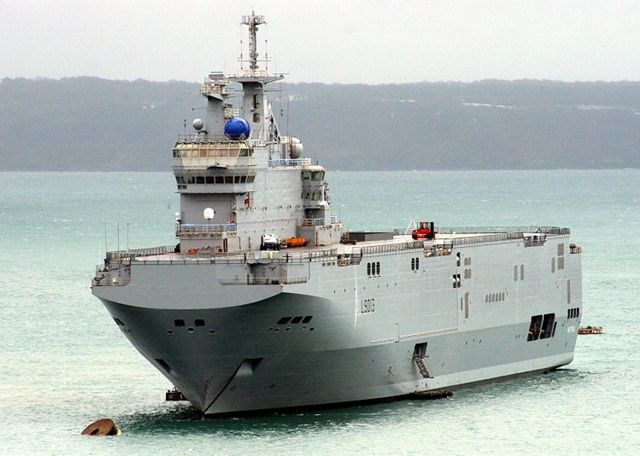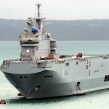Eurasia Daily Monitor’s Top 11 of 2011

By Pavel Felgenhauer, May 12th
More than 20,000 servicemen marched on Red Square in Moscow on May 9, to commemorate victory in the Great Patriot War—9,000 more than on the same day in 2010. The amount of military hardware that rolled by the stands was smaller, however (106 pieces instead of 159 in 2010). On May 9, 2010 there was a flyby over Red Square involving 127 military aircraft. This year the flyby was reduced to five transport Mi-8 helicopters carrying the Russian national flag and the colors of the branches of the armed forces. The servicemen marched in “no thrills” field uniforms, and no new weapons were displayed (Interfax, May 6). The present day Russian military is indeed a pale shadow of the once awesome Red Army of the Cold War era.
By Roman Muzalevsky, February 16th
As Central Asia opened up to the rest of the world after the collapse of the Soviet Union opportunities have emerged for the regional countries to build links with Europe, South-East Asia, and the Middle East. This has proved to be significant in the development of cross-regional energy and transport corridors. These “bridge” initiatives serve to strengthen the sovereignty of the republics in the region that is often proclaimed by Russia to be a zone of its “privileged interests,” facilitating the development of economic and political linkages between countries and regions.
By Vladimir Socor, January 21st
The Russian Navy plans to increase its presence on Ukrainian territory by adding urban infrastructure and civilian manpower to its naval assets in Sevastopol. The command of Russia’s Black Sea Fleet intends to build a housing estate (“mikrorayon”) for 20,000 personnel of the fleet, their dependents, and civilian service providers to the Russian fleet in that city.
By Vladimir Socor, March 15th
US Vice-President, Joseph Biden, paid a seven-hour flag-showing visit to Chisinau on March 11, on his return trip from Moscow to Washington. With this, Biden became the highest-ranking US official ever to visit Moldova during 20 years of the country’s independence. US policy toward Moldova has been replete with good intentions poorly executed, periodical gestures without continuity, and few deliverables beyond generous US economic assistance (both bilaterally and through the International Monetary Fund).
By Roger McDermott, August 2nd
Russian military manning, saddled with conscripts serving for twelve months and reduced numbers of contract personnel, continues to be subject to experiments. The latest, relates to a brigade in the North Caucasus, which will witness the preparation of “combat-ready” conscripts in a new training program lasting 90 days
By Mairbek Vatchagaev, June 16th
An incessant anti-terrorist operation to neutralize the members of the armed resistance has been carried out in the mountainous parts of Kabardino-Balkaria since February, 2011. Forces from other regions of the Russian Federation had been redeployed there for this purpose as well. Unsurprisingly, the Russian Minster of Internal Affairs was forced to acknowledge in Nalchik that the armed resistance still had the ability to strike hard against the authorities, despite the death of their leaders.
By Roger McDermott, April 26th
Putin, during his marathon speech to the Duma on April 20, referred to ambitious plans to modernize the armed forces and specifically singled out the Navy as a key priority. Putin explained: “Speaking of defense-related issues once again, I would like to note that a large fund of about five trillion rubles ($178. 45 billion) is being allocated for restoring and expanding the Navy for the first time in contemporary Russian history. This is the amount set out in the state arms procurement program, which has now been adopted. In all, we plan to spend a staggering 20 trillion rubles ($713.8 billion) on its implementation.”
By Vladimir Socor, March 18th
In Spring 2011 Russia abandoned the Trans-Balkan (Burgas-Alexandropoulos) oil pipeline project, which it had planned for more than a decade to form a transcontinental oil corridor, stretching from Kazakhstan to the Aegean Sea. The Kremlin also abandoned (in all but name) the South Stream gas pipeline project, designed to have stretched from the Black Sea into eight European countries.
By Pavel Felgenhauer, February 10th
The perceived US military and political threat clearly overwhelms strategic planners in Moscow and a convincing military deterrent is seen as the only credible answer. In Barack Obama’s White House, the START III treaty may be seen as an instrument to establish enduring trust and cooperation on sensitive issues with Russia. In Moscow START III is viewed as essentially a technical agreement to preserve a credible nuclear deterrent against the US by forcing the Pentagon to downsize its nuclear arsenal to help Russia maintain a balance and contain a dangerous opponent.
By Pavel K. Baev, October 24th
The poignant comment by John McCain that dictators all over the world “may be a little bit more nervous” after the death of Muammar Gaddafi has generated sharp resonance in Russia because the outspoken US Senator named Vladimir Putin among the dictators in question (Moskovsky Komsomolets, RBC Daily, October 21).
By Saban Kardas, March 4th
Turkey pursued a policy over the popular uprising in Libya reflecting the investment and business ties it had developed with Libya. More importantly, Turkey’s position in the ongoing debate concerning the involvement of the international community in the form of sanctions or possible military intervention increasingly sets Turkey apart from Western policy.




